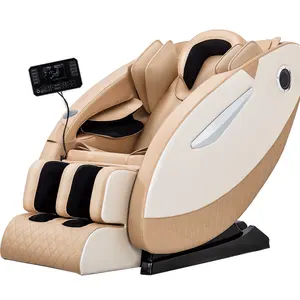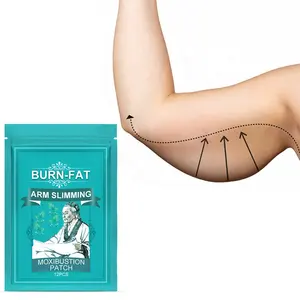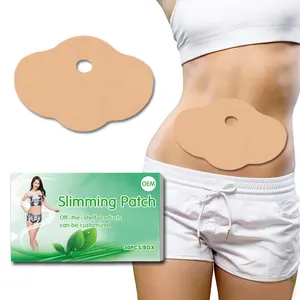आपके उद्योग में लोकप्रिय






OPTIFORM F2X रॉड्स - थर्मोफॉर्मिंग के लिए प्लग असिस्ट सामग्री
₹8,498.27 - ₹84,982.64
न्यूनतम ऑर्डर: 10 नग







व्यावसायिक फ़ैक्टरी 10% टंगस्टन ब्लैंक कार्बाइड छड़ें सिंगल होल के साथ
₹3,399.31 - ₹5,098.96
न्यूनतम ऑर्डर: 10 नग







उच्च गुणवत्ता वाले पोम एंटी-स्टैटिक एसिटल पॉलीफॉर्मेल्डेहाइड प्लास्टिक रॉड, cnc मशीनिंग के लिए उपयुक्त
₹832.83 - ₹951.81
न्यूनतम ऑर्डर: 10 किलोग्राम







उच्च परिशुद्धता भूकंपीय प्रतिरोधी sd सीधे शंक कनेक्ट रॉड, छोटे व्यास की गहरी गुहा प्रसंस्करण पक्ष निश्चित विस्तार
शिप करने के लिए तैयार
₹407.92 - ₹560.89
न्यूनतम ऑर्डर: 10 नग
शिपिंग प्रति टुकड़ा: ₹956.06



उच्च गुणवत्ता गर्मी और रासायनिक प्रतिरोध सफेद प्राकृतिक शुद्ध कुंवारी PTFE प्लास्टिक रॉड
₹569.39 - ₹594.88
न्यूनतम ऑर्डर: 10 नग
शिपिंग प्रति टुकड़ा: ₹1,537.34






ऑडी के लिए फैक्टरी थोक स्टेबलाइजर रॉड 6R0411315 6Q0411315A A1 VW जे जे पोलो सामने स्टेबलाइजर लिंक
शिप करने के लिए तैयार
₹212.46 - ₹841.33
न्यूनतम ऑर्डर: 1 नग
शिपिंग प्रति टुकड़ा: ₹1,363.98

एक वर्ग के लिए कार रियर स्टेबलाइजर लिंक रॉड W169 W245 169 320 05 89 1693200589
₹679.87 - ₹1,104.78
न्यूनतम ऑर्डर: 1 नग





कारखाने गर्म बिक्री w203 c209 पीछे छोड़ दिया बोलबाला बार लिंक स्टेबलाइजर रॉड OEM 2033200789 2033200889
₹509.90 - ₹849.83
न्यूनतम ऑर्डर: 1 नग



वोल्वो S60 S90 V90 S90L XC60 XC90 3882501 के लिए वोमाला OE 31387675 रियर MK2 रियर स्वे बार एंटी रोल स्टेबलाइजर राइट टाई रॉड
₹382.43 - ₹424.92
न्यूनतम ऑर्डर: 10 नग
शिपिंग प्रति टुकड़ा: ₹369.68






फ्रंट क्षैतिज स्थिरीकरण रॉड ओम 5087.69 508769 जो प्यूज़ो 207 1.6t के लिए उपयोग किया जाता है
₹297.44 - ₹424.92
न्यूनतम ऑर्डर: 50 नग
शिपिंग प्रति टुकड़ा: ₹278.75






शेवरले कैप्टिवा के लिए BYSUN ऑटो भागों स्टेबलाइजर रॉड 96996460
₹1,325.73 - ₹1,699.66
न्यूनतम ऑर्डर: 500 नग







4x4 लिफ्ट किट रियर ट्रैक बार स्टेबलाइजर ठोस एडजस्टेबल पैंहार्ड रॉड 2005-2015
₹2,124.57 - ₹2,634.47
न्यूनतम ऑर्डर: 10 नग





कारखाने गर्म बिक्री w203 c209 रियर बाएं हाथ बार लिंक स्टेबलाइजर रॉड ओएम 2033200789 2033200889
₹509.90 - ₹849.83
न्यूनतम ऑर्डर: 10 नग
शिपिंग प्रति टुकड़ा: ₹695.16






पूर्ण-स्टेबलाइज़र पीछे. lh. litudesm5.. रेनाल्ट के लिए. स्टेबलाइज़र बार कोलिंग रॉड पीछे की ओर 4551652010.551108783r.
₹671.37 - ₹696.86
न्यूनतम ऑर्डर: 2 नग
शिपिंग प्रति टुकड़ा: ₹1,177.86






10162654-00 13481034-00 EQEA-3401010 स्टेबलाइजर बार टाई रॉड और बॉल जॉइंट ASSY बॉल जॉइंट स्टीयरिंग गियर BYD सीगल के लिए
₹2,549.48 - ₹8,498.27
न्यूनतम ऑर्डर: 2 सेट


33556764428 विरोधी रोल बार स्टेबलाइजर ड्रॉप लिंक बीएमडब्ल्यू के लिए टाई रॉड E90 3355 6764 428
₹404.52 - ₹539.64
न्यूनतम ऑर्डर: 5 इकाइयां






रॉड/अकड़, स्टेबलाइजर, सामने धुरा सही स्टेबलाइजर लिंक 48820-0C010 टोयोटा Tundra 07-15 के लिए
₹1,274.74 - ₹12,747.40
न्यूनतम ऑर्डर: 100 नग






रियर सस्पेंशन रॉड स्टेबलाइजर बार लिंक सी 48830-42020 4883042020 टोयोटा के लिए 4 ए 3 लेक्सस nx z1
₹121.53 - ₹158.07
न्यूनतम ऑर्डर: 10 नग
शिपिंग प्रति टुकड़ा: ₹443.61







समायोज्य निलंबन विरोधी-रोल बार सदमे अवशोषक coilover के लिए बोलबाला बार स्टेबलाइजर लिंक रॉड
₹152.97 - ₹254.95
न्यूनतम ऑर्डर: 200 नग


ऑटो स्पेयर निलंबन भाग रॉड इठलाना स्टेबलाइजर लिंक बोलबाला बार 13169439 के लिए ओपल एस्ट्रा ZAFIRA
₹84.99 - ₹509.90
न्यूनतम ऑर्डर: 200 नग






फ्रे ऑटो भागों स्टेबलाइजर लिंक रॉड इठलाना स्टेबलाइजर धावक 9013200089 के लिए 901 902 903 904
₹314.44 - ₹339.94
न्यूनतम ऑर्डर: 20 नग






एल्यूमीनियम Bankstick स्टेबलाइजर कार्प मछली पकड़ने से निपटने के लिए स्टैंड पैर रॉड फली
शिप करने के लिए तैयार
₹152.97 - ₹161.47
न्यूनतम ऑर्डर: 20 नग
शिपिंग प्रति टुकड़ा: ₹91.79






फ्रंट एक्सल छोड़ दिया रॉड इठलाना स्टेबलाइजर लिंक फोर्ड शेवरलेट देवू के लिए मित्सुबिशी ँ 96225859 के लिए
₹191.22 - ₹344.18
न्यूनतम ऑर्डर: 100 नग






ऑटोबोट 508737 रॉड स्टेबलाइजर लिंक सिट्रोन के लिए ऑटोउंड रॉड स्टेबलाइजर लिंक
₹4,249.14
न्यूनतम ऑर्डर: 100 नग
शिपिंग प्रति टुकड़ा: ₹685.81






उच्च गुणवत्ता नियंत्रण शाखा के लिए प्रो टन जनरल 2 Missubi शि PW521816 PW521822 लिंक स्टेबलाइजर
₹271.95 - ₹297.44
न्यूनतम ऑर्डर: 200 नग
शिपिंग प्रति टुकड़ा: ₹266.85

BBmart मर्सिडीज बेंज के लिए ऑटो हिस्सा रॉड इठलाना स्टेबलाइजर W447/W639 ँ 6363200189 636 320 01 89
शिप करने के लिए तैयार
₹545.59
न्यूनतम ऑर्डर: 3 नग
शिपिंग प्रति टुकड़ा: ₹10,910.08





स्मार्ट फोर्ट्वो 453 के लिए स्वे बार स्टेबलाइजर लिंक फ्रंट लिंक टोरसन बार लिंकेज स्टेबलाइजर
₹297.44 - ₹339.94
न्यूनतम ऑर्डर: 2 नग
शिपिंग प्रति टुकड़ा: ₹1,858.58






OEM 1K0411315D 5Q0411315 5QM-411-315 5QM411315 नई विरोधी रोल बार स्टेबलाइजर रॉड लिंक अकड़ सामने ऑडी A3 2008-2013 के लिए
₹424.92 - ₹849.83
न्यूनतम ऑर्डर: 10 नग
शिपिंग प्रति टुकड़ा: ₹1,606.18



फैक्टरी प्रत्यक्ष मूल्य 202000124AA चेरी एक्सीड के लिए स्टेबलाइजर लिंक रियर कनेक्टिंग रॉड असेंबली
₹220.11
न्यूनतम ऑर्डर: 10 नग





समायोज्य कार कूलिंग रॉड स्टेबलाइजर बार लिंक
₹403.67 - ₹509.90
न्यूनतम ऑर्डर: 200 नग
शिपिंग प्रति टुकड़ा: ₹294.04






1k055465a 1k505465J 1k5465J 1k5465k स्टेबलाइजर बार रॉड लिंक 1.4 1.6 2.0
₹311.89 - ₹405.37
न्यूनतम ऑर्डर: 100 नग
शिपिंग प्रति टुकड़ा: ₹79.04






के लिए ऑटोमोबाइल निलंबन धातु संकर्षण रियर स्थिरता लिंक 1998-2007 FZJ100 UZJ100 लैंड क्रूजर 100 Hilux 48802-60090
शिप करने के लिए तैयार
₹195.47 - ₹271.95
न्यूनतम ऑर्डर: 5 नग
शिपिंग प्रति टुकड़ा: ₹514.15






VAUXHALL एस्ट्रा जम्मू ड्रॉप लिंक MK6 2009>2016 सामने स्टेबलाइजर विरोधी रोल बार जोड़ी X2 350617 13169439 13219141 13258052 90498745
₹169.97 - ₹203.96
न्यूनतम ऑर्डर: 100 नग






उच्च गुणवत्ता वाले ऑटो स्पेयर पार्ट फ्रंट बाएं एंटी-रोल बार एंड स्टेबलाइजर लिंक 1044396-00-d 1044396-00-d 1044396-00-d
शिप करने के लिए तैयार
₹735.10 - ₹1,138.77
न्यूनतम ऑर्डर: 2 नग
शिपिंग प्रति टुकड़ा: ₹2,016.64





लिंक/कपलिंग रॉड स्टेबलाइजर बार लेमफोर्डर 3363401 पोर्श 99634307004 के लिए टाई रॉड बॉल जॉइंट
₹1,844.13 - ₹1,937.61
न्यूनतम ऑर्डर: 2 नग
स्टेबलाइजर रॉड के बारे में
स्टेबलाइजर रॉड इन दिनों आम लोगों के लिए कोई नई बात नहीं है और अब इन्हें इस्तेमाल करने के लिए वर्जित नहीं माना जाता है। यदि आप उस सुखद आनंद की तलाश में हैं, तो आपको अपार संभावनाएं देखनी चाहिए। स्टेबलाइजर रॉड संग्रह में ये अस्थिर और सुडौल हैं। स्टेबलाइजर रॉड हर पैसे के लायक हैं और रात को आपके लिए खास बनाना सुनिश्चित करते हैं। इन गुड़ियों का जीवनकाल उनके बालों से लेकर पैर की उंगलियों तक हर अर्थ में शुरू होता है।
क्या आप एक ऐसे जीवनसाथी की तलाश में हैं, जो अपने जीवनसाथी की तलाश में हैं या एक दंपति जो अपने जीवन में मसाला लगाना चाहते हैं, आप इनका उपयोग कर सकते हैं । स्टेबलाइजर रॉड उस आग को प्रज्वलित करने के लिए। ये शानदार स्टेबलाइजर रॉड आपकी उम्मीदों के अनुसार अनुकूलन योग्य हैं। ये अदभुत। स्टेबलाइजर रॉड दोनों पुरुष और महिला संस्करणों में उपलब्ध हैं और सुरक्षित उपयोग के लिए दवा-ग्रेड सिलिकॉन से बनाया गया है। अब एक हो जाओ और जुनून और आग की एक रात का आनंद लें। सभी बॉडी शेप, साइज़ और एथनिकिटी में स्टेबलाइजर रॉड। आपकी आवश्यकताओं के लिए जो भी हो। स्टेबलाइजर रॉड, आप उन सभी को साइट पर प्राप्त कर सकते हैं। ये। स्टेबलाइजर रॉड बेहतरीन कारीगरों द्वारा आकार में ढाला जाता है और हर जटिल विवरण का गहन निरीक्षण किया जाता है। इन गुड़ियों में एक वास्तविक जीवन वाले व्यक्ति के समान आँखें, बाल, नाखून और शरीर के अन्य सभी अंग होते हैं।
सी.ओ. के व्यापक स्पेक्ट्रम की पेशकश स्टेबलाइजर रॉड जो आपके बजट और अन्य आवश्यकताओं में फिट होने वाले उत्पादों को खरीदने में आपकी मदद कर सकता है। ये उत्पाद प्रकृति में उपयोग करने के लिए सुरक्षित, प्रमाणित और पर्यावरण के अनुकूल हैं। इन उत्पादों पर OEM आदेश उपलब्ध हैं।
क्या आप एक ऐसे जीवनसाथी की तलाश में हैं, जो अपने जीवनसाथी की तलाश में हैं या एक दंपति जो अपने जीवन में मसाला लगाना चाहते हैं, आप इनका उपयोग कर सकते हैं । स्टेबलाइजर रॉड उस आग को प्रज्वलित करने के लिए। ये शानदार स्टेबलाइजर रॉड आपकी उम्मीदों के अनुसार अनुकूलन योग्य हैं। ये अदभुत। स्टेबलाइजर रॉड दोनों पुरुष और महिला संस्करणों में उपलब्ध हैं और सुरक्षित उपयोग के लिए दवा-ग्रेड सिलिकॉन से बनाया गया है। अब एक हो जाओ और जुनून और आग की एक रात का आनंद लें। सभी बॉडी शेप, साइज़ और एथनिकिटी में स्टेबलाइजर रॉड। आपकी आवश्यकताओं के लिए जो भी हो। स्टेबलाइजर रॉड, आप उन सभी को साइट पर प्राप्त कर सकते हैं। ये। स्टेबलाइजर रॉड बेहतरीन कारीगरों द्वारा आकार में ढाला जाता है और हर जटिल विवरण का गहन निरीक्षण किया जाता है। इन गुड़ियों में एक वास्तविक जीवन वाले व्यक्ति के समान आँखें, बाल, नाखून और शरीर के अन्य सभी अंग होते हैं।
सी.ओ. के व्यापक स्पेक्ट्रम की पेशकश स्टेबलाइजर रॉड जो आपके बजट और अन्य आवश्यकताओं में फिट होने वाले उत्पादों को खरीदने में आपकी मदद कर सकता है। ये उत्पाद प्रकृति में उपयोग करने के लिए सुरक्षित, प्रमाणित और पर्यावरण के अनुकूल हैं। इन उत्पादों पर OEM आदेश उपलब्ध हैं।














